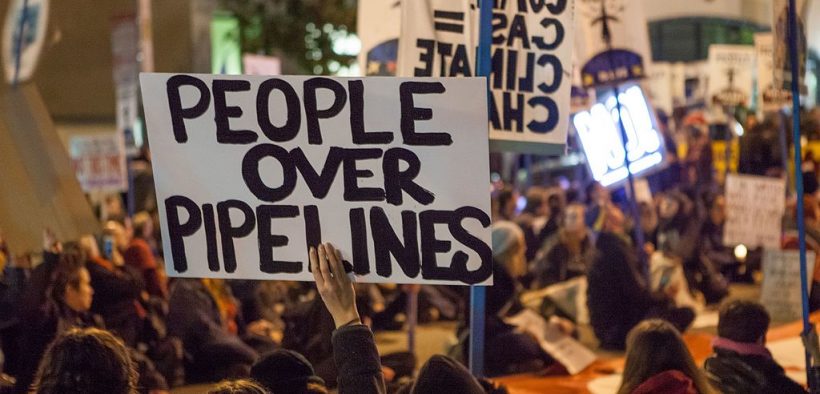Keystone Pipeline Leaks In North Dakota, Second Big Spill In Two Years

The controversial Keystone Pipeline leaked hundreds of thousands of gallons of oil on Thursday, making it already the eighth largest spill of the decade.
The Keystone Pipeline leaked approximately 383,000 gallons of crude oil in North Dakota on Thursday, vindicating environmentalists who have long argued that the project poses severe ecological dangers. While the extent of damage remains unknown, Keystone’s 2017 spill was revised from an initial estimation of 210,000 gallons to more than 400,000, leaving critics concerned about the environmental damage the leak may have caused.
“I wish I could say I was shocked, but a major spill from the Keystone pipeline is exactly what multiple experts predicted would happen,” Greenpeace USA senior research specialist Tim Donaghy said in a statement. “In fact, this is the fourth significant spill from the Keystone pipeline in less than ten years of operation. History has shown us time and again that there is no safe way to transport fossil fuels, and pipelines are no exception.”
The Washington Post notes that Keystone’s leak on Thursday is it’s second major spill in two years, in addition to many smaller spills that have afflicted the pipeline since it opened in 2010 to carry crude oil from Alberta, Canada, to refineries in the Midwest. Some experts have called into question the quality of the pipe’s construction.
“It’s a valid question, two cracks on a fairly new pipeline — geez, what’s going on?” Richard Kuprewicz, the president of pipeline safety consulting company Accufacts, told the Star Tribune in Minneapolis.
Thursday’s Keystone pipeline spill, which Greenpeace estimates “is already the eighth-largest pipeline oil spill of the last decade,” doesn’t appear to have contaminated local drinking water, although it did impact wetlands, according to the director of the North Dakota Department of Environmental Quality’s division of water quality. Kurpewicz said “it could take years for the wetlands to return to their natural state,” as per the Post.
Critics, such as Montana state Sen. Frank Smith, argue that Keystone’s vulnerability to leaks will eventually endanger drinking water. Common Dreams’ Jake Johnson writes that many are skeptical of the claim that drinking water was not affected by Thursday’s leak, in part because observers who drive by the closed-off site are subject to fine.
“The Trump administration has pushed construction of the Keystone XL pipeline despite the known environmental and public health risks,” tweeted Sen. Elizabeth Warren. “North Dakotans deserve better than this. We need clean energy to protect our public lands and waters.”
Rep. Tulsi Gabbard also spoke out about the leak, saying: “What we’re hearing time and time again, is that ‘these pipelines are the best ever built, and that they won’t leak.,’ but time and time again, we see the threat these pipelines have to our environment, our land, our soil, our water resources… the leaks we are seeing, the environmental threats that are being created, further highlight the need for us as a nation to get off of fossil fuels and make those investments in clean, renewable, and sustainable energy.”















